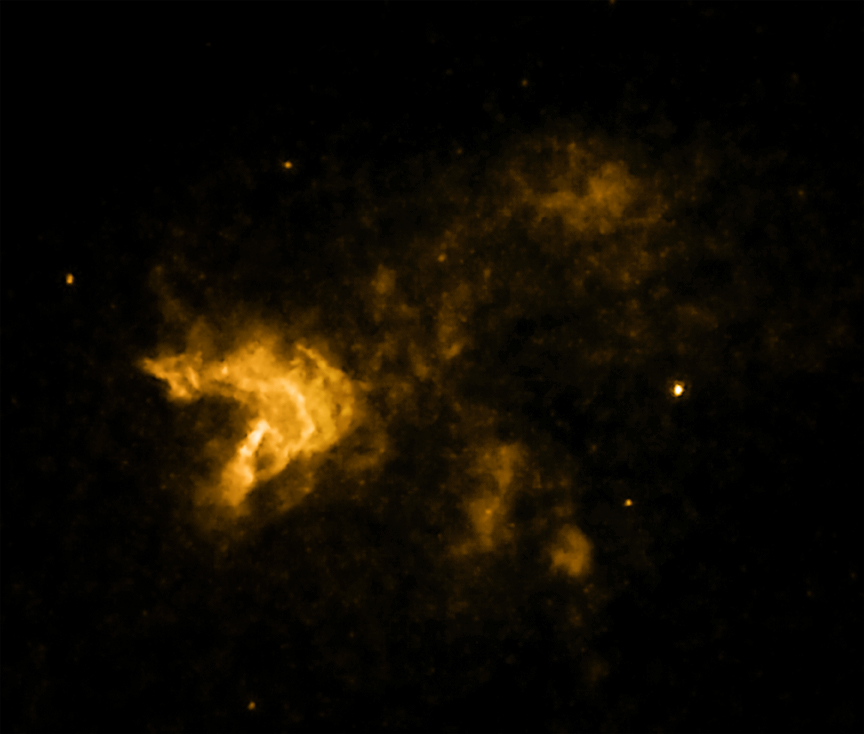
 Credit: NASA/CXC/SAO/I.Lovchinsky et al.
Credit: NASA/CXC/SAO/I.Lovchinsky et al.
Which Way to Explode?
In which direction should a star explode? That might seem like a silly question if you think about it - stars are fairly symmetrical, so why should a star explode in some preferred direction? Yet, as stellar explosions called supernovae are examined in greater detail, astronomers find more and more evidence that something channels the enormous explosive energy of the supernova in one particular direction. A case in point comes from new X-ray images of a rather young supernova remnant known as G350.1-0.3. This remnant was produced by the explosion of a massive star about 15000 light years away from us towards the center of the Milky Way. Although the explosion was powerful, it was probably unobservable from earth due to its great distance, and because of thick intervening clouds of gas and dust which would have helped to hide it. But X-rays generated by the supernova can penetrate through these clouds, and so provide a good way to find such hidden supernova remnants. The false-color image above of G350.1-0.3 was obtained by the Chandra X-ray Observatory. While many supernova remants have a fairly circular shape on the sky, this Chandra image shows that G350.1-0.3 has a highly non-circular shape. In addition, Chandra detects X-ray emission from a neutron star in the region as well. This neutron star (seen as a point-like source of X-rays near the center right of the image above) may have been created by the supernova explosion. But if so, then the position of the neutron star from the center of the remnant suggests that it was given an enormous "kick" to the right in the explosion. The derived speed of the neutron star is enormous, more than 3 million miles per hour. Why would it have gotten shot out in this particular direction? Astronomers are hard at work on an answer.
Published: February 6, 2012
<
HEA Dictionary ● Archive
● Search HEAPOW
● Other Languages
● HEAPOW on Facebook
● Download all Images
● Education ● HEAD
>

Each week the HEASARC
brings you new, exciting and beautiful images from X-ray and Gamma ray
astronomy. Check back each week and be sure to check out the HEAPOW archive!
Page Author: Dr. Michael F. Corcoran
Last modified Monday, 26-Feb-2024 17:45:31 EST


